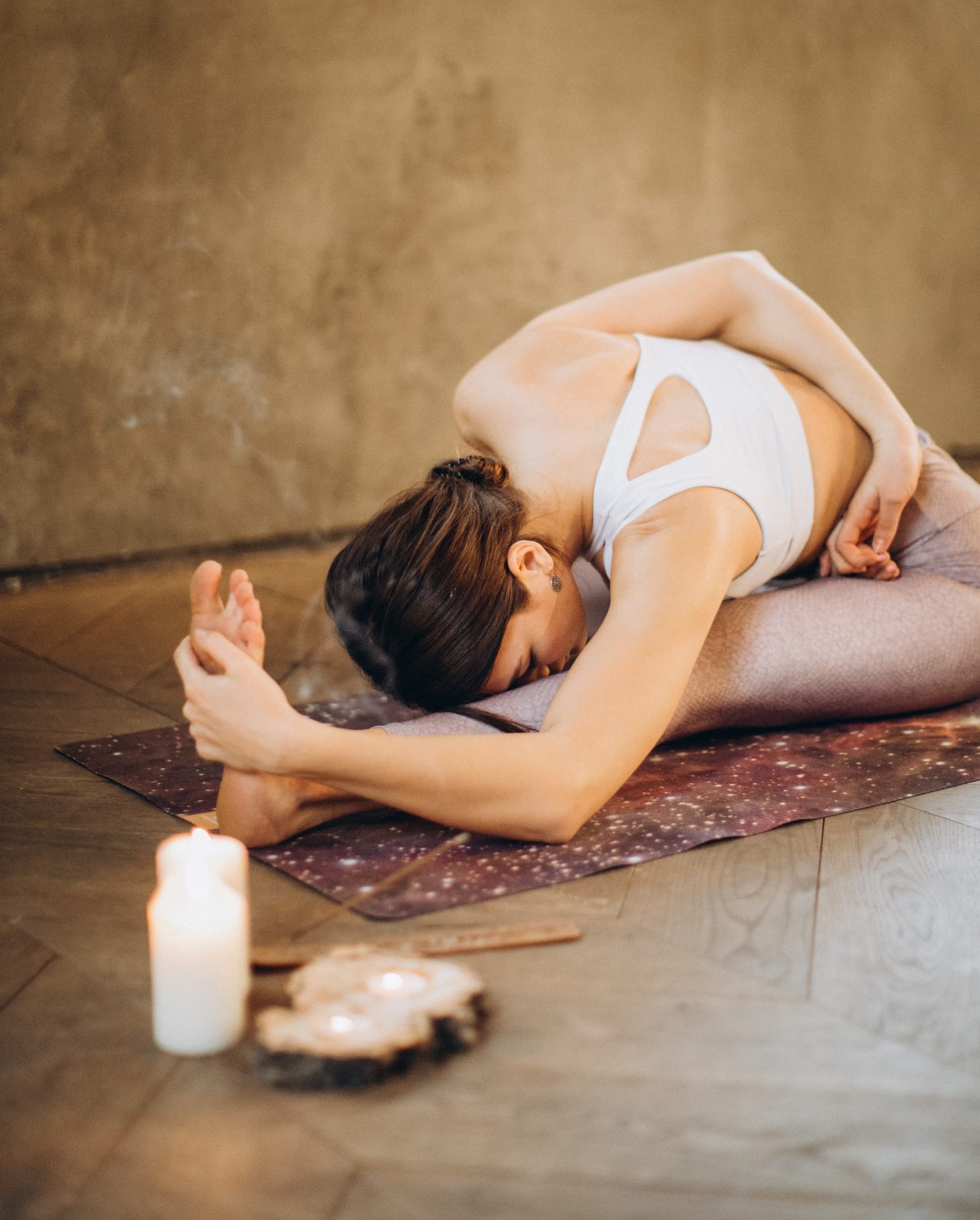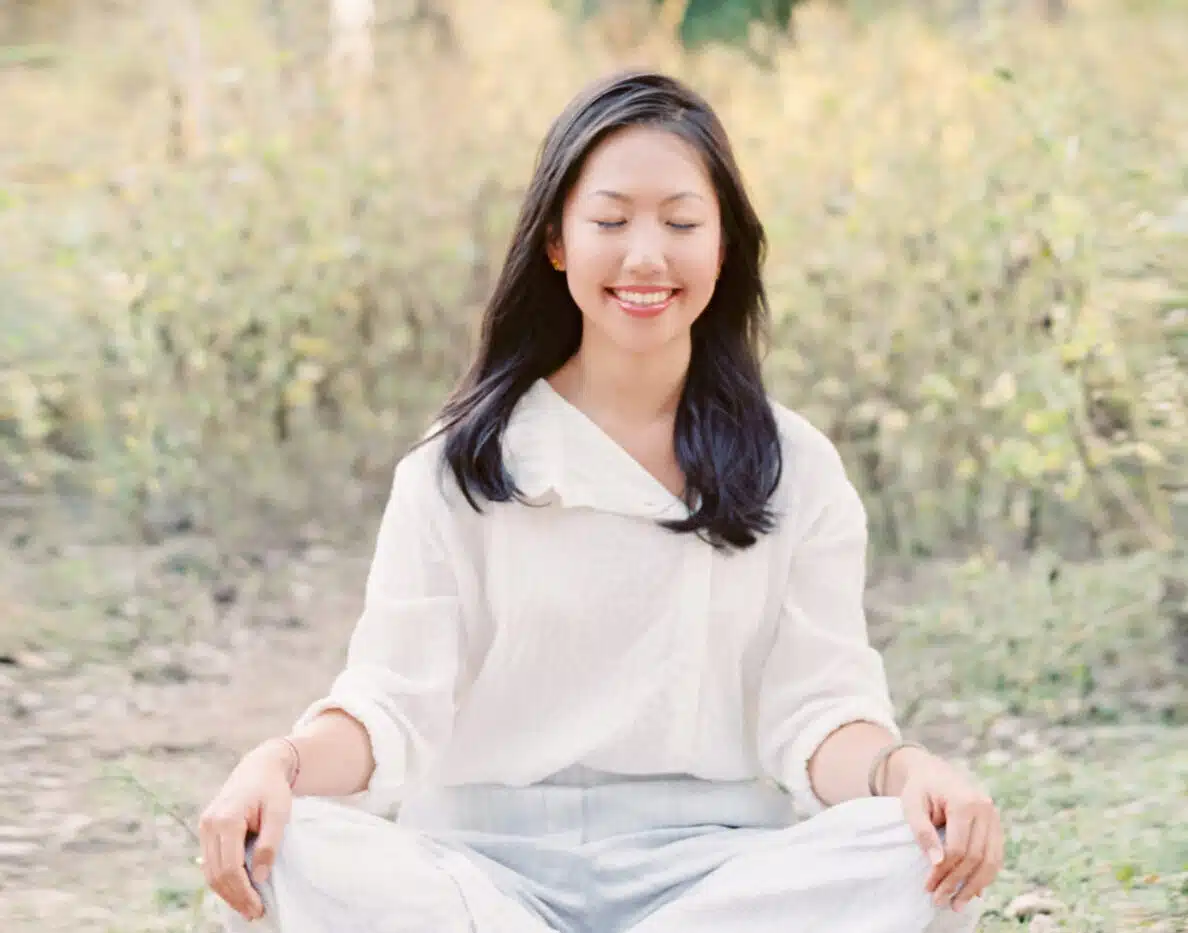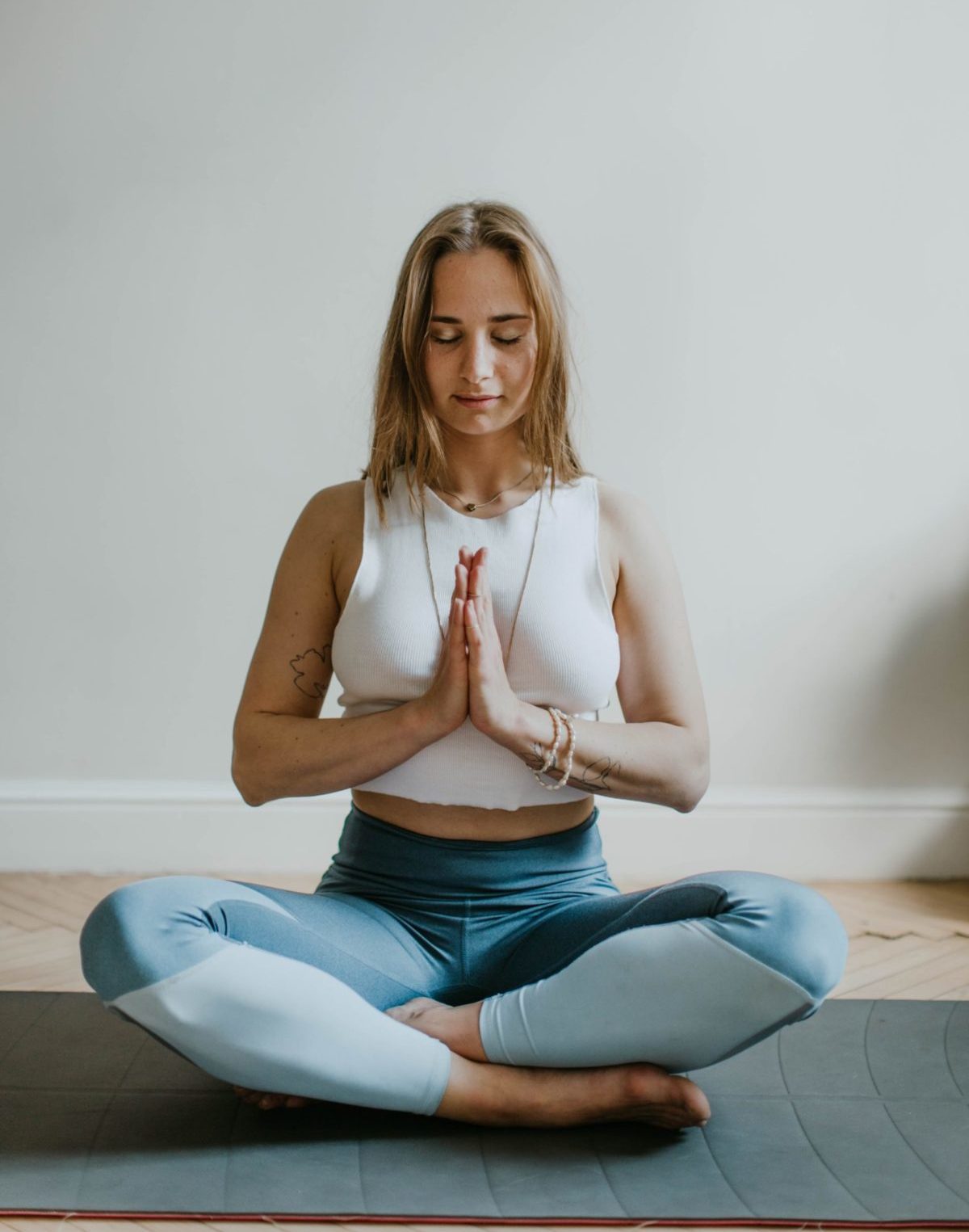Why Yoga Isn’t the Same as Meditation
Is yoga meditation?
When most people think of yoga, they think of a fitness class full of people in various stretching poses. When they think of meditation, images of an individual sitting quietly with their eyes closed come to mind. One is active, one is seemingly inactive… so why do some think that yoga and meditation do the same thing?
In order to explore the difference between meditation and yoga, we have to introduce the correct definition of yoga and distinguish it from the common conceptions. Meditation also has many definitions, so we’ll talk more generally about meditation as ‘sitting quietly with eyes closed” before comparing Vedic Meditation specifically to yoga.

What is yoga?
Yoga in Sanskrit refers to the experience of individuality meeting universality. The Western definition of yoga– stretching in a yoga studio, wearing spandex, and listening to ethereal indie music – is not actually yoga.
Hatha yoga is the closest to western yoga since Hatha yoga refers to the body movements (asanas) and breathwork (pranayama) that western yoga teachers guide their students through. The intention of Hatha yoga is to manipulate the body and breath to force the consciousness to experience a ‘yoga’ state or a state of oneness between individuality and universality. The great yogis would say that a practice is not yoga at all unless that state of oneness between one’s individuality and universal consciousness was reached.
Hatha yoga is only one of 1008 kinds of yoga. There are over 1,000 variations of adjectives that yogis and Maharishis of the Vedic tradition identified as ways to reach the state of yoga or to reach the state of oneness.
Can you use yoga as meditation?
If you’ve done yoga, you may find that your savasana pose (corpse pose) feels very meditative. You feel relaxed and your mind is quieter. You wonder if you’ve drifted off to sleep, and occasionally you go into a deep place of quiet.
Usually, Savasana is only 10 minutes or less in western yoga classes, which is enough to feel like you’ve had a short meditation or a short sleep.
If you’re practicing with a teacher who shows you how to use your breath and the yoga poses to change your consciousness state, then you could experience yoga by the end of your practice. Meditation is another vehicle to take the consciousness into the yoga state and requires a longer sitting than 10 minutes to convey the consciousness to that place.
In the sense that you can use Hatha yoga as the conveyance for your consciousness to enter the yoga state, then yes, you could use it in place of meditation. In the sense that meditation and Hatha yoga cannot be done at the same time, no you cannot use yoga as meditation.
Hatha yoga has benefits to the flexibility and strength of the body, and for the most part that is what western hatha yoga practitioners are after. The benefits of meditation are different from those of Hatha yoga, and it is easier to reach the yoga consciousness state through meditation than it is to reach it through Hatha yoga.

Start your Meditation Journey Today
ATTEND A FREE INTRO TALKWhich is more beneficial, yoga or meditation?
How could this be? Hatha yoga demands a very specific way of breathing and moving the body for an extended amount of time, usually an hour. It requires immense concentration and control. Subjugating the body and consciousness to ultimately experience universal consciousness is challenging, which is one of the reasons why there are no master yogis or Maharishis who relied solely on Hatha yoga.

The Yoga Sutras
The Yoga Sutras of Patanjali discusses the kinds of yoga– or the many methods to reach a yoga state– in 196 sutras or aphorisms, and in eight elements of practice. The Yoga Sutras were the first work to categorize and name the kinds and stages of yoga practice in one place, and they are hard to understand for anyone who hasn’t experienced the yoga consciousness state.
The Yoga Sutras were compiled over 2600 years ago… so you can imagine that today’s conception of yoga is a very simplified, watered-down version of the original tradition.
Choosing a method to experience yoga consciousness
When considering the best way to reach the yoga state, consider that meditation vs yoga is comparing the two most different modalities available. Also, consider what kind of benefits you’re looking for out of your practice: are you seeking a physical regimen to be stronger and more flexible? Are you seeking a way to practice your concentration? Or a way to train your breath?
Thousands of people all over the world have sought Vedic Meditation because it is effortless, easy, calming, and anyone can do it with any level of physical or mental ability.

What is the difference between yoga and meditation?
So when we ask, “Is yoga meditation?” or, “is meditation yoga?”… The answer is yes and no.
Yes, meditation is a method to reach the state of yoga.
No, it is not Hatha yoga.
There are multiple kinds of yoga that meditation can fall under. Vedic Meditation specifically is called Nishkam Karma Yoga. In Sanskrit, this means, ‘action hardly done, yoga results.’
How does Vedic Meditation reach a yoga state?
When a new Vedic Meditator learns from a qualified instructor, they receive a bija mantra. This is a meaningless sound with particular resonance or frequency, chosen specifically to suit the meditator’s consciousness state. The meditator closes their eyes and effortlessly allows the bija mantra to arise in their awareness. Thoughts will also arise intermittently so that the meditator effortlessly moves between an awareness of thoughts and an awareness of their mantra.
As the mantra becomes quieter and quieter in the meditator’s mind, it slowly charms their mind to slow its thinking. Eventually, the mind will transcend thinking altogether and enter a thoughtless place. This thoughtless place is the experience of yoga, it is where individuality experiences a backdrop of cosmic, unbounded consciousness. This is where the universal is experienced with the small self, the individual.
The meditator isn’t aware of this interaction– it isn’t a sensation or a thought. Since the experience of yoga is beyond thought, the meditator is in a state completely void of mental inputs or stimulus responses. It may only last a moment, and yet at that moment, universal consciousness affects the individual’s consciousness. The individual’s capacity to perceive the whole grows slowly as their awareness increases.
Nishkam Karma Yoga happens by letting the bija mantra effortlessly take the mind to the place of yoga. That’s why Nishkam Karma yoga means ‘action hardly done, yoga results.’
Can you do both yoga and meditation?
If you’re practicing Hatha yoga in the western style and your intention is primarily for physical fitness and flexibility, then meditation can provide an effortless route to experience calm and reach the state of oneness with universal consciousness. Even if your Hatha yoga practice does take you to this place of yoga, you can still practice meditation separately to experience yoga in multiple ways. The yogi masters practiced many forms of yoga to reach the state of union with universality.
The only precaution to note is that each form of yoga and each kind of practice you want to try will only work if you practice it on its own, without blending techniques.

How to combine yoga asanas with Vedic Meditation
Once a Vedic Meditator has been practicing consistently for a few weeks or months, their instructor may suggest that they move to the next level of their practice. Rounding is an advanced practice that combines breath, yoga asanas, and the twenty-minute Vedic Meditation sitting with a 10-minute lie down at the end. It takes 45-minutes to an hour to complete a single round, and the result of the practice, when done correctly, is a deeper relaxation.
Vedic Meditation releases stress from the body, and when we prime the body with breath and asanas, we can uncover deeper layers of stress and release them more efficiently.
It is essential that a meditator’s first experience of Rounding be taught and monitored by a qualified Vedic Meditation instructor. This can happen in an in-person workshop, in a dedicated rounding retreat, where a group of meditators can get away from their daily demands and practice up to eight rounds in a single day.
We like to call this ‘industrial strength meditation’ because participants can release up to 6 months’ worth of accumulated stress in three to four days dedicated to Rounding on retreat. There are always enough instructors to monitor and counsel each individual about their experience so that if any un-stressing comes up, the meditator has guidance as the body and consciousness change.
Conclusion
Since the conception of yoga in the west has more to do with fitness than experiencing universal consciousness, the western version of Hatha yoga is different from meditation. Traditional Hatha yoga and Vedic Meditation (Nishkam Karma Yoga) are similar in that they can both bring the practitioner to the place of experiencing universal consciousness. Vedic Meditation is the most effortless and user-friendly way to ease the mind into transcendence.
Sign up for an intro talk to receive a mantra and learn Vedic Meditation today!



